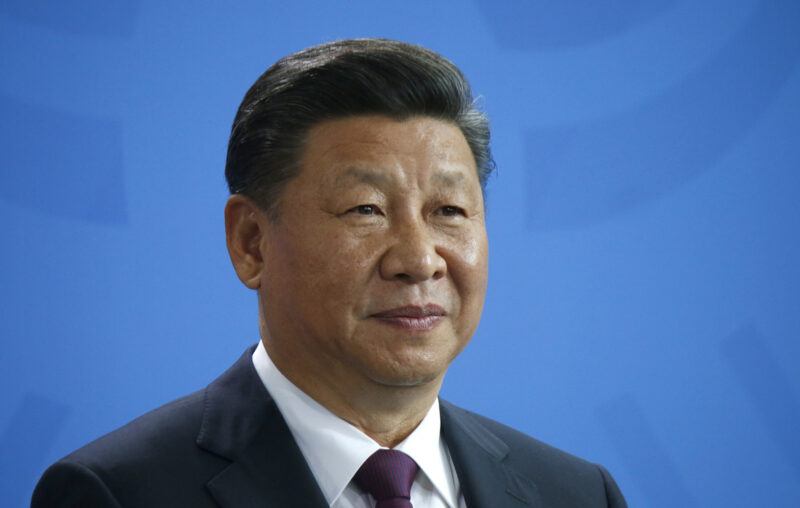“GramXi,” China, and the Long March through Multilateral Institutions

Last Friday, in Bucharest, Romania, government dignitaries from around the world converged on the Ceausescu People’s Palace to ratify a telecommunications treaty.
The real work took place over the previous three weeks, as delegates to the International Telecommunications Union (ITU) voted on leadership for the next four-year term, and hammered out agreements on spectrum, satellites and technology policy. As the ITU is a United Nations agency, delegates represented all UN member states, even Russia, despite its recent bad behavior, and even China, despite its lingering bad behavior, especially as it attempts to use the multilateral system to advance its totalitarian aims.
The ITU is not the sexiest of international organizations. It lacks the visibility of the annual autumn traffic jam on the Hudson that surrounds the UN General Assembly meeting, or a NATO security summit. Much of the ITU’s work is technical and a bit humdrum, ranging from spectrum harmonization to international telephone numbering. But the recent meeting in Bucharest matters for the future of freedom.
Beyond the technical stuff, the ITU officials are also responsible for aspects of internet policymaking. This policy is created under the framework of the “multistakeholder model,” in which all stakeholders participate, from governments to the private sector, and from civil society to academia. The framework is laid out in the Tunis Agenda, a UN agreement that is almost 20 years old. Some countries, however, like China, believe that governments should control the internet without input from other stakeholders, and that the best forum for that takeover is the ITU.
The Chinese Community Party rejects the international community’s constraints on its ability to maintain a totalitarian state. But the Chinese attempt to control internet standards and thwart privacy protection is part of a deeper, strategic, and, alas, brilliantly executed long-term game to infiltrate and corrupt the international system. The underlying theory comes from the Italian Marxist Antonio Gramsci (1891-1937). Contrary to more direct, revolutionary Marxists, who advocated a full-frontal assault on the capitalist system, Gramsci proposed a quieter, long-term strategy, a “long march through the institutions” (the phrase, from Gramsci, was popularized by the German Marxist activist Rudi Dutschke in the 1960s). The idea was to infiltrate and corrupt the institutions of capitalism, slowly and methodically. The bourgeois behemoth, Gramsci opined, was too strong for direct revolutionary action. But it was vulnerable to a thorough and patient takeover of its key institutions by dedicated party members who would transform the institutions, while also populating them with allies.
To understand the efficiency of Gramsci’s theory, we need look no further than the American university. The American Academy has long been friendly to socialism (a problem decried by Bill Buckley in God and Man at Yale). But the university was still subject to basic rules of scholarship and debate, and traditions were protected by alumni and regents. The university remained dedicated to the pursuit of truth, a fortress far too mighty for a direct assault from Marxist ideology. In the spirit of Gramsci, the long march through academic institutions started in the 1970s, with the emergence of postmodernism. That philosophy, which discarded truth in favor of competing narratives, was initially isolated and arcane. But its proponents slowly ensconced themselves in departments of English. We remember, as undergraduates in the early 1990s, being vaguely amused at that stuff coming out of English departments: rejection of “dead white male” authors, regardless of quality, the challenge against truth in the assertion that “there is no meaning, only interpretation,” the leftward drift of English departments, the adoption of a radical analysis involving classes (later “identities”) over individuals, and a single-minded story of systemic oppression. The thinking was as radical as it was unsound. Capitalism is, after, all, the world’s greatest anti-poverty program, and acting human beings cannot be lumped into facile and static “classes.” But fast-forward 30 years and the entire university has been infected. The social sciences have joined, and the natural sciences are following – mathematics itself is, we are told, racist and sexist. DEI has become the universities’ religion. While the world wasn’t looking, reason and free speech were removed, as opponents of neo-Marxism are no longer engaged, but canceled. Bravo, signore Gramsci!
Alas, the American academy is not the only playground for students of Gramsci. The fall of Hong Kong offers another example of the patience and strategic genius of the Chinese communists. At the handover in 1997, Hong Kong became a “special autonomous region” of China, an enclave of liberty protected by a charter of rights. The Chinese communists had other designs, but were far too savvy to engage in a full-frontal assault on Hong Kong, which would have incurred the reprobation of the international community and the ire of the local population. In the spirit of Gramsci, the Chinese communists began a long march through key civil society institutions, primary and secondary education, to facilitate an eventual rewriting of the history books; higher education, to control student dissent; the territory’s Legislative Council, to pave the way for future rubber-stamping of Beijing diktats; and, of course, the Hong Kong Police Force. Once a paragon of restraint, hired throughout the region for training in humane crowd control and anti-riot techniques, the constabulary would come to play a key role in the quashing of dissent. By the time Beijing was ready to deal its coup de grâce to liberty, in the form of the draconian 2019 security law, the fruits of the long march through Hong Kong’s institutions were ripe for harvest. To be sure, there were protests in 2019, many, sustained, and valiant. But there was also an astonishing number of counter-protests, and the legislature proved to be malleable. The police turned out to be nasty in their repression; in several instances, riot police shouted dispersion orders to protesters, not in the territory’s Cantonese, but in the occupier’s Mandarin. Officers had indeed been trained in the mainland as part of the infiltration process. The courts, in a break with Hong Kong’s long tradition of rule of law, doled out harsh sentences to protesters. The security law was ultimately adopted. Pro-democracy activists were incarcerated, and dissenting newspapers were shut down. The People’s Liberation Army garrison in Hong Kong never left its barracks to quell the protests. It didn’t have to, because Gramsci’s work of 20 years was already complete.
American universities and Hong Kong are not the only example of the Chinese communist long march through the institutions. Starting with Nixon’s overture in the early 1970s, engagement with China has been a guiding Western doctrine. If China has its proverbial “seat at the table” of multilateral institutions, it will be a better international citizen – or so goes the theory. This 50-year plan has created a powerful and hostile China, where there once was a weak and hostile China. But the geopolitics of Chinese containment are a separate question; we focus here on China’s long march through multilateral institutions.
China has steadily woven its way into multilateral institutions. By 2021, Chinese nationals were in charge of four of the 15 principal UN agencies, and China financially supported the campaigns of allies in numerous other UN agencies, including the World Health Organization. Many multilateral organizations are staffed by Chinese nationals or Chinese-backed leaders.
In the past decade, China has had a leadership role in all the major multilateral technology organizations, including the ITU, the International Organization for Standardization (ISO) and the International Electrotechnical Commission (IEC). Since 2014 the ITU, ISO and IEC have all had Chinese Presidents or Secretaries General. Until COVID, Chinese delegates to the ITU technical standards meetings made up between 25 and 50 percent of the total number of participants. Additionally, China has played a key role in ensuring that technical standards developed within China have become “internationalized” in the ITU.
The ITU was on course to be the latest domino in the long march. However, the September 29, 2022, election of the new ITU Secretary General changed all that. The American candidate soundly defeated the China-backed Russian candidate. The Deputy Secretary General is a young Lithuanian. The status quo is now no longer the status nor the quo at the ITU. This will worry countries like China, which depended on compliant leadership to turn a blind eye to the obvious growth of Chinese power and output within multilateral institutions.
Although it may seem arcane and technical, multilateral telecommunications leadership and standards matter for liberty. The recent ITU elections are but a setback in China’s overall strategy. It is important for the West to push back against the long march, and call out China’s infiltration and misuse of multilateral institutions to achieve global domination. There is a separate conversation about how the UN system is no longer fit for purpose, but we will leave that for a longer discussion. The ITU proceedings matter for liberty and privacy against the rise of Chinese tyranny and its long march through multilateral institutions. GramXi, indeed.













